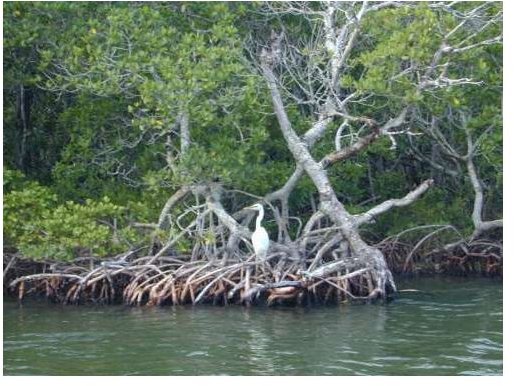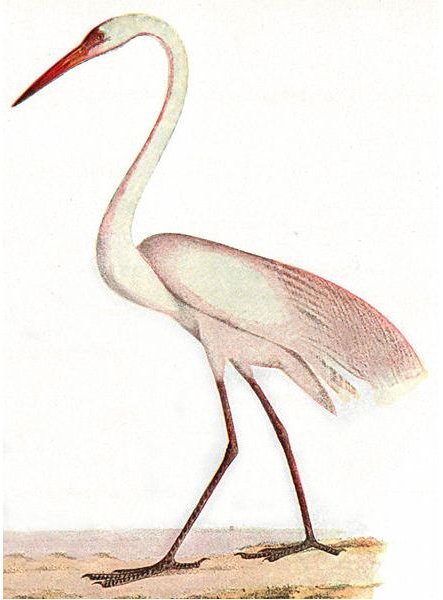"A White Heron" Analysis: "A White Heron" Symbolism, "A White Heron" Summary, "A White Heron" Lesson Ideas
A Bad Start
The halls were already filled with students one February morning, just before seven o’clock, though a bright sunrise still glimmered faintly among the trunks of the cars in the student lot. A little girl was driving in her Chevy, a plodding, dilatory, provoking vehicle in its behavior, but a valued companion for all that. They were going away from whatever light there was, and striking deep into the lot, but their tires were familiar with the path, and it was no matter whether their eyes could see it or not.
That’s when she plowed into my new BMW that I foolishly decided to park in the student lot. Traumatized, I called in a sub and threw together some “White Heron” lesson ideas for a sub that included “A White Heron” summary, “A White Heron” analysis, and “A White Heron” symbolism.
I now share it with you.
Summary

I know–you read this story two years ago and don’t quite remember everything. You have 167 essays to grade and don’t have time to read it again. You don’t need to feel guilty for reading this “White Heron” summary.
Sylvia lives on a farm. She hadn’t always lived on a farm. She used to live in the city. She prefers the farm and its solitude and all the birds and animals. Sylvia’s in charge of milking a pesky, wandering cow. One day as she walks the cow back home, she hears a whistle. The whistle belongs to a hunter, carrying a gun, searching for rare birds to kill and stuff.
The hunter offers Sylvia $10 if she can help him find a white heron. Silvia dreams of the many things she could buy with $10 (your governor will give you that much to buy textbooks next year, for example (the previous comment is commentary and not an actual part of “A White Heron” summary)). Sylvia also takes a liking to the charming hunter and seeks to gain favor in his sight.
Sylvia awakes early one morning and climbs the tallest tree in the forest in order to locate the heron’s nest. Her quest is successful. Upon her return, however, she does not reveal the bird’s location. Later in life, Sylvia contemplates what she gave up that day. The narrator pleads with nature to reward Sylvia’s sacrifice by revealing its secret.
Analysis

Enhance you class discussion of the story with “A White Heron” analysis and “White Heron” symbolism.
- Environmentalism - This story was written long before the environmental movement took hold, but it certainly embraces environmentalist ideas. It also embodies Romantic ideals of nature and individualism.
- Gender Issues - It’s no coincidence that Sylvia, the grandmother, and the cow are all females living a peaceful rural life when interrupted by the male hunter.
- Internal Conflict - The main conflict in “A White Heron” focuses on Sylvia’s internal battle of whether or not to reveal the location of the white heron.
- External Conflict - The story’s rural setting is set up against the urban setting from which the hunter comes.
- Romanticism and Realism - “A White Heron” embodies two contradictory literary schools–Romanticism and Realism. The story shares Romantic ideals, the importance of nature and the individual, yet its style, use of details, realistic settings, and realistic people exemplifies Realism.
“A White Heron” Symbolism
- The color white--the color of the heron–represents the purity of rural life.
- The tall tree in the forest that Sylvia climbs symbolizes clarity of thought. It is from her lofty perch that Sylvia sees all and from this lofty perch that Sylvia realizes the heron’s life is more valuable than $10.
- The geranium that stands out in the city setting, but belongs in a rural setting symbolizes Sylvia, who belongs in nature. It also represents the suffocating nature of the city in comparison to the farm. The name Sylvia comes from the same root as sylvan, which is a spirit that frequents or lives in the woods.
- The hunter symbolizes the intrusion of civilization and technology–a common element of Romanticism.
Lesson Ideas
I’m not going to reinvent the wheel. Instead I’ll provide links (in addition to the ones on Romanticism and Realism above) to lessons that may be beneficial in teaching “A White Heron”:
- Try this symbolism lesson plan.
- Take a look at these lesson ideas and short stories for teaching conflict.
- This interviewing characters lesson plan can be adapted for an interview with the hunter, Sylvia, the grandmother, the cow, and the heron.
This post is part of the series: More Short Story Teacher Guides
Teaching short stories has never been easier.